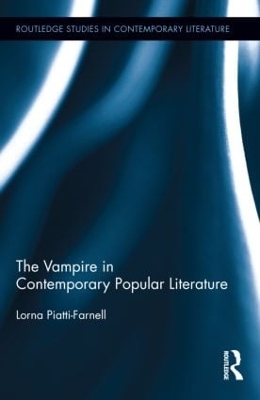Routledge Studies in Contemporary Literature
2 total works
Establishing an interdisciplinary connection between Food Studies and American literary scholarship, Piatti-Farnell investigates the significances of food and eating in American fiction, from 1980 to the present day. She argues that culturally-coded representations of the culinary illuminate contemporary American anxieties about class gender, race, tradition, immigration, nationhood, and history. As she offers a critical analysis of major works of contemporary fiction, Piatti-Farnell unveils contrasting modes of culinary nostalgia, disillusionment, and progress that pervasively address the cultural disintegration of local and familiar culinary values, in favor of globalized economies of consumption.
In identifying different incarnations of the "American culinary," Piatti-Farnell covers the depiction of food in specific categories of American fiction and explores how the cultural separation that molds food preferences inevitably challenges the existence of a homogenous American identity. The study treads on new grounds since it not only provides the first comprehensive study of food and consumption in contemporary American fiction, but also aims to expose interrelated politics of consumption in a variety of authors from different ethnic, cultural, racial and social backgrounds within the United States.
Prominent examples from contemporary vampire literature expose a desire to re-evaluate and re-work the long-standing, folkloristic interpretation of the vampire as the immortal undead. This book explores the "new vampire" as a literary trope, offering a comprehensive critical analysis of vampires in contemporary popular literature and demonstrating how they engage with essential cultural preoccupations, anxieties, and desires. Drawing from cultural materialism, anthropology, psychoanalysis, literary criticism, gender studies, and postmodern thought, Piatti-Farnell re-frames the concept of the vampire in relation to a distinctly twenty-first century brand of Gothic imagination, highlighting important aesthetic, conceptual, and cultural changes that have affected the literary genre in the post-2000 era. She places the contemporary literary vampire within the wider popular culture scope, also building critical connections with issues of fandom and readership. In reworking the formulaic elements of the vampiric tradition — and experimenting with genre-bending techniques — this book shows how authors such as J.R. Ward, Stephanie Meyers, Charlaine Harris, and Anne Rice have allowed vampires to be moulded into enigmatic figures who sustain a vivid conceptual debt to contemporary consumer and popular culture. This book highlights the changes — conceptual, political and aesthetic — that vampires have undergone in the past decade, simultaneously addressing how these changes in "vampire identity" impact on the definition of the Gothic as a whole.

